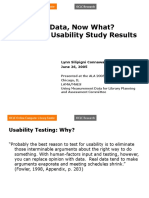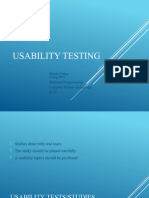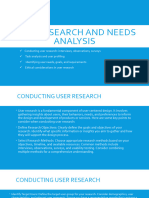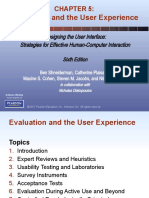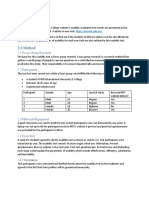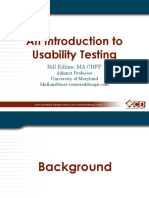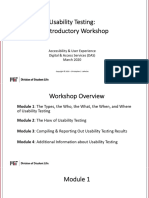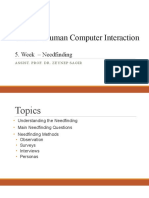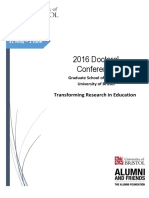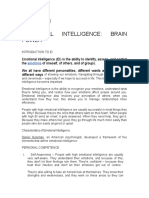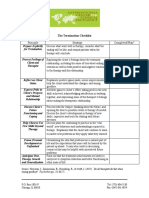Course 4 – Module 2: Conducting research with usability studies.
- Usability Study: A research method that assesses how easy it is for participants to
complete core tasks in a design.
o Conducting a study with an early idea (lo-fi prototype) is Concept Testing
o Conducting a study with a working prototype is the most common time to conduct
a Usability Study.
o Conducting a study with a complete product can help make small changes.
- Moderated Usability Study: A moderator guides participants through the study in real
time.
o Benefits: Guide the participants through the study, Ask specific questions and
follow up in real time, Rapport building between the moderator and participant,
Make language adjustments, Explain the user journey.
o Limitations: Moderator could influence or bias the participants, Less flexible,
Participant may not identify with the moderator, Reliable internet required.
- Unmoderated Usability Study: Participants test out the prototypes without human
guidance.
o Benefits: Participants uses the product in the real world, Participants complete
tasks on their own time and in their own space, Participants may feel more
comfortable giving feedback without others around, More participants, Simple
user journeys.
o Limitations: No human guidance if issues arise, No real-time follow up questions,
Little to no control over the environment (distractions), More data to analyze,
Simple user journeys only.
- How to begin a moderated usability study:
o Build a rapport with participants.
o Thank participants for coming.
o Remind participants to be open and honest.
o Have participants fill out paperwork, like an NDA.
o Explain the focus of the study and what participants will give feedback on.
o Establish ground rules for the study.
o Remind participants that they are not being tested.
o Keep your emotions neutral.
- Techniques for moderating a usability study:
o Ask open-ended questions.
o Ask follow-up questions.
o Summarize their answer for confirmation.
- Biases in Usability Studies:
o Implicit Bias (without conscious knowledge)
o Serial Position Effect (remember first/last more than the middle)
� o Friendliness bias: The tendency of people to agree with those they like to
maintain a non-confrontational conversation.
o Social desirability bias: The tendency for people to answer questions in a way
that will be viewed favorably by others.
o Hawthorne effect: People tend to act differently when they know they’re being
watched.
- How to reduce bias in usability studies:
o Identify and admit your own biases.
o Find participants from a representative sample.
o Define the research criteria beforehand.
o Phrase interview questions thoughtfully.
o Let participants express themselves fully and in their own words.
o Be mindful of your body language.
- Why take notes during a usability study?
o Capture any thoughts you have during the study.
o Summarize a participant's experience during the study.
o Highlight compelling quotes to include in your research report.
- Spreadsheet note-taking: A simple and easy method to keep your notes organized using
a spreadsheet.
o Tasks
List the prompts and what participants are expected to do.
o Click Path
o Observations
Provides an indirect understanding of the behaviors and opinions of users
o Quotes
o Task Completion
Score how easy/difficult it was for the participant.














